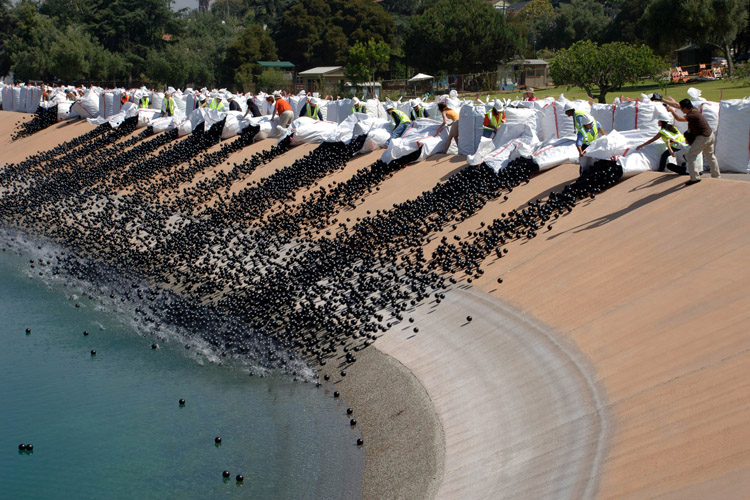The Los Angeles Department of Water and Power (LADWP) has dumped 96 million black balls into its local reservoir in Sylmar, California.
The shade balls will block out the sunlight and help ensure the highest quality drinking water for Los Angeles, ensuring it is clean, pure, and delivered at the lowest rates in Southern California.
The 175-acre water reservoir was totally covered with small, black plastic balls to prevent sunlight-triggered chemical reactions, deter birds and other wildlife, and protect water from rain and wind-blown dust.
The $34.5 million investment is expected to save $250 million when compared with all efficient alternatives.
Simultaneously, the 4-inch-diameter black balls will prevent the annual loss of about 300 million gallons of water due to evaporation.
"Shade balls are a great example of how engineering meets common sense. Our water system has significantly changed since William Mulholland built it more than 100 years ago," underlines Marcie Edwards, general manager at LADWP.
"As we make updates, we are mindful to be wise and practical with our investments. Shade balls are an affordable and effective way to comply with regulations and help us continue to deliver the best drinking water to our customers."
Each ball cost $0.36.
The idea was suggested by Brian White, a retired LADWP biologist when he learned about the application of "bird balls" in ponds along airfield runways.
Learn how you can easily save water.
